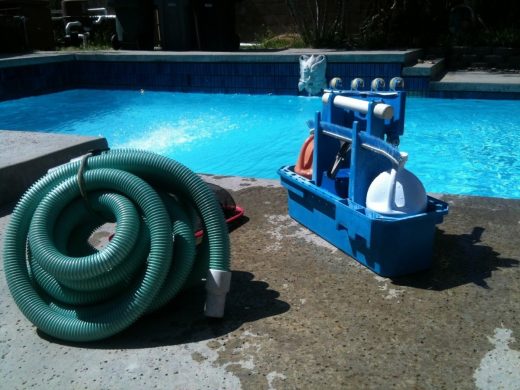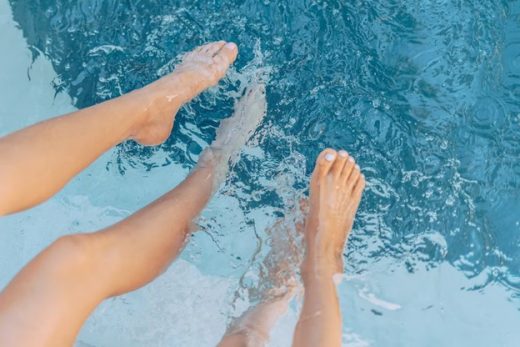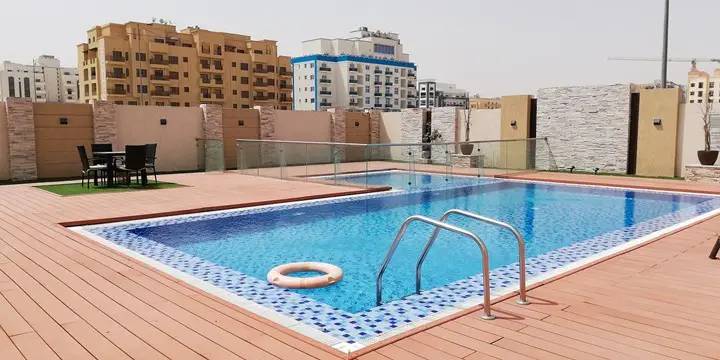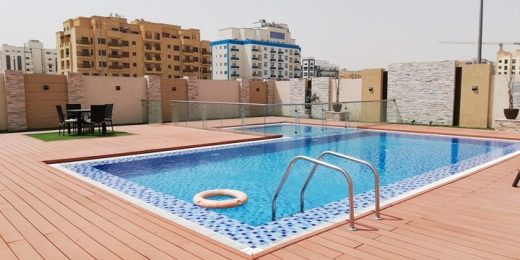17 tips to increase pool safety guide, Home swimming design tips, Property outdoors swim advice
17 Tips to Increase Pool Safety
August 29, 2023
Pool safety is an urgent issue deserving our attention and action. According to the Centers for Disease Control and Prevention (CDC), about ten people die from unintentional drowning daily in the United States, making it the fifth leading cause of accidental injury death. With alarming statistics like these, this article is dedicated to providing 7 essential and scientifically-backed tips to enhance pool safety.
Understanding Pool Safety
Understanding pool risks is the first step toward a safer swimming environment. Slips and falls from wet surfaces can lead to minor injuries or even more significant damage, like broken bones. Drowning is the most severe risk, often resulting from a lack of supervision or barriers to pool access. We can create a more secure pool environment by recognizing these hazards and implementing regular maintenance, proper equipment checks, and fostering a safety culture.
Tips to Increase Pool Safety
Tip 1: Install Proper Fencing
A fence around the pool, at least four feet high, can act as the first line of defense, especially for young children. Self-closing and self-latching gates that adhere to local regulations can block unauthorized access. According to studies, this barrier alone has been found to reduce more than half of swimming pool-related accidents involving children.
Tip 2: Maintain Water Quality
Ensuring that the pool water is clean and pathogens-free is essential for health. Regularly testing pH levels, maintaining a range between 7.2 and 7.8, and adequately using chlorine or bromine following EPA guidelines ensure water safety. Poor water quality can lead to diseases like Giardia, E. coli, and Shigella.
Tip 3: Utilize Pool Covers
Using pool covers that meet ASTM standards when not in use can prevent accidental falls. It’s not just about keeping debris out; well-fitted safety covers act as a physical barrier, adding safety for children and pets.
Tip 4: Implement Rules and Supervision
Clear rules can mitigate many accidents. This means establishing an enforceable set of safety rules like no running or pushing, and a responsible adult must always supervise children. This adult should be trained in CPR, a recommendation supported by the American Red Cross.
Tip 5: Provide Proper Lighting
Appropriate lighting helps prevent accidents that may occur due to poor visibility. By meeting the National Electrical Code requirements for pool lighting, both in and around the pool, the risk of trips and falls can be significantly reduced, enhancing safety during evening hours.
Tip 6: Educate on Safe Behavior
Education about safe behavior around pools is a continuous process. Children and guests should be educated about the potential dangers and encouraged to take lessons from certified swimming instructors. The CDC found that formal swimming lessons can reduce the risk of drowning among children aged 1-4 by 88%.
Tip 7: Implement Anti-Entrapment Devices
Suction entrapment is a severe risk in pools, where a person can be trapped underwater by the force of the pool’s suction. Implementing anti-entrapment devices that comply with the Virginia Graeme Baker Pool and Spa Safety Act is a must to break the suction and prevent these terrifying incidents.
Pool Safety for Different Age Groups
Different age groups have unique safety needs.
- Children: Require constant supervision, swim aids if necessary, and age-appropriate swimming lessons.
- Adults: Must know basic safety rules, understand personal swimming abilities, and avoid alcohol while swimming.
- Seniors: May need additional consideration for mobility, such as non-slip surfaces, handrails, and comfortable entry/exit points.
Technology and Pool Safety
In the age of technology, there are numerous devices to enhance pool safety.
- Alarms: Various alarms can detect accidental falls or unauthorized access to the pool area, alerting homeowners.
- Safety Barriers: Automated locks and barriers can prevent children or pets from getting in the pool area without supervision.
- Surveillance Cameras: These can continuously monitor the pool area, even inside the house, providing real-time visuals.
Home Pool Safety
Home pool safety is a vital consideration for families who own or are planning to own a pool. Unlike public pools that may have lifeguards and other safety measures in place, the responsibility for safety in a home pool falls entirely on the homeowner.
This responsibility includes regular maintenance, appropriate barriers such as fencing, proper lighting, availability of life-saving equipment, and constant supervision when the pool is in use.
Awareness and adherence to local regulations and safety standards can make a home pool a secure and enjoyable place for everyone. Developing a family pool safety plan, with rules understood and followed by all, will ensure that the pool is a source of fun and not a cause for concern.
Emergency Preparedness
Being prepared for emergencies is not an option but a necessity.
- Learn CPR: Being certified in CPR can save lives in drowning. Local Red Cross offices often offer training.
- Emergency Contacts: A list of contacts, including the nearest poison control center, should be readily available.
- First Aid Kit: A fully stocked first-aid kit with necessary medical supplies should be kept near the pool area.
Safe Use of Pool Chemicals
Chemicals are essential for maintaining pool hygiene but must be handled carefully.
- Storage: According to manufacturer guidelines, chemicals should be stored securely, away from children and pets.
- Usage: Following guidelines for use, wearing proper protective equipment, and never mixing chemicals prevents accidents and maintains the effectiveness of these substances.
Special Considerations for Public Pools
Public pools require additional safety measures due to the larger number of users.
- Lifeguards: Trained and certified lifeguards must always be on duty, following regular observation and intervention protocols.
- Signage: Clear and legible signage displaying rules, depth markers, and emergency instructions must be visible.
Pool Safety for Pets
Pets are part of many families, and their safety is equally essential.
- Supervision: Never leave pets unattended near a pool, as they may not know how to get out if they fall in.
- Ramps: Installing ramps can aid pets in exiting the reservoir, preventing exhaustion or drowning.
Pool Equipment and Maintenance
Proper maintenance of pool equipment is vital to safety.
- Check Drain Covers: Regular inspections to ensure they are in good condition will prevent entrapment.
- Inspect Equipment: Regularly inspect ladders, handrails, and diving boards for wear and tear. Repair or replace anything that may pose a risk.
Seasonal Pool Safety
Different seasons come with unique challenges for pool care.
- Winter: Proper winterization prevents damage, including draining water to appropriate levels and using antifreeze in necessary components.
- Summer: Peak usage times require regular checks on chlorine levels and filtration to ensure optimal water quality.
Accessibility and Special Needs Considerations
Everyone should be able to enjoy the pool safely.
- Access Ramps: Installing access ramps or lifts ensures those with mobility challenges can access the pool.
- Special Equipment: Providing special equipment, such as pool wheelchairs or adaptive swimming aids, makes the pool inclusive for all users.
Pool safety is a multifaceted responsibility that requires attention, dedication, and knowledge. These guidelines are not mere suggestions but necessary steps toward creating an environment where the joy of swimming can be experienced without fear. By adhering to these measures, pool owners, public pool operators, and swimmers can contribute to a culture where every splash is safe.
Comments on this guide to 17 tips to increase pool safety article are welcome.
Swimming Pools Articles
Swimming Pool Posts
Choosing the Best Pool Cleaning Service

How To Keep Your Pool Clean and Well-maintained

How to ensure your family swimming pool is child-friendly
Prepare Your Home Pool For Summer
Buildings
Residential Architecture
Comments / photos for the 17 tips to increase pool safety advice page welcome






